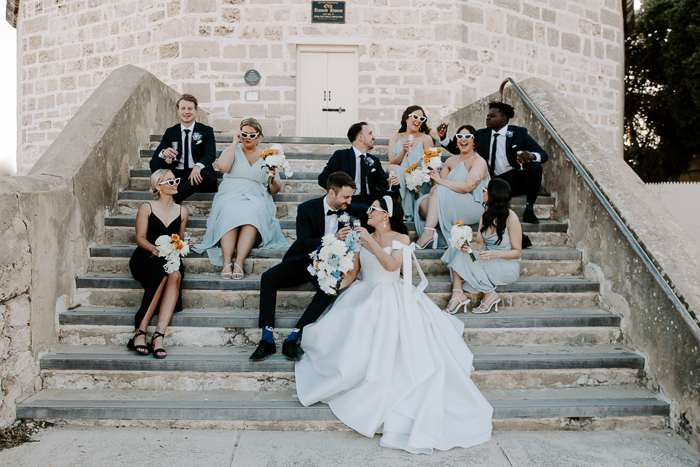
For the sake of the nature that he loves, and with an urge to learn more about the unpredictable processes of the ice, Danish director and producer Lars Ostenfeld risked his life following top scientists into a landscape that is one of the wildest and most extreme in the world.
The eternal ice in Greenland seems like a pretty inhospitable place for life. What made you decide to undertake such a project?
One day I was in my living room and I read in a newspaper that the ice sheet had experienced a record melt – again. And then I wondered, what does the ice sheet of Greenland actually look like? Is there life, animals or plants, in and around the ice? Who could show me? Then I found some scientists who do fieldwork on the ice. I decided I wanted to make a portrait of three intrepid glaciologists, who bring the reality of climate change and glacial melting into sharp focus: Alun Hubbard, Dorthe Dahl-Jensen and Jason Box. I travelled with them to the Arctic, as they monitored how fast the Greenland ice sheet was melting.
For how long were you in Greenland?
All in all, I travelled to Greenland nine times. Three of those times were on more extended expeditions over several weeks. It was a strange feeling when we were dropped off by the helicopter on the ice for the first time. When it flew off, we were left alone, like four small black dots on a large sheet of paper.
How would you describe the environment?
One hundred kilometres out, on the inland ice, on top of a 1-kilometre-thick mattress of frozen water, was the first time I was on the ice sheet. Through my camera, I began to look at the landscape and start registering it. Then, I discovered that something interesting starts to happen if you stand there long enough. You begin to see the nuances. You see that the inland ice actually slants a bit; that it isn’t one giant plateau. You can see that the wind has shaped the surface of the ice like waves, frozen in time. After 14 days on skis and with a sled, we came out to the coast, and suddenly heard a bird for the first time. It dawned on me that we hadn’t seen animals, plants or any life during the trip.
How did you prepare for this trip?
I suppose you could call Claus Kongsgaard, who trains the Arctic Command to survive on the ice and arranges extreme trips onto the ice. Then you will learn that I was a pain in the ass, who called with an unimaginable number of questions. What clothes should I bring? How do I charge the battery? Which sleeping bag is good? What food should I eat? What about safety? Claus was also very good at mental training. I also had my friend and partner Caspar Haarløv with me on all the trips.
Did you have any specific plans in advance about what exactly you wanted to photograph?
I haven’t had much experience on the ice. As a child, I had a magical place I could explore on my own – the bog behind my house. I went there every day, year-round, on expeditions deep into unknown territory. In the same way, I want to study the ice sheet with my camera; or rather, to study those who study the ice. It’s necessary to observe and examine the ice: it’s called ‘ground truth’.
What did a typical day with the glaciologists look like? How were you involved in their daily routines?
It was basically camping on ice, with all the mess that comes with moving every day, and having to pack up, set up, cook, sleep and pack up again. We were a team and we were together on the expedition. We had to survive together. In the big glacier mill, we stayed for ten days. Here we had a shared tent as an office and workplace. The food was primarily frozen-dried bags that only had to be supplied with hot water. On this trip it was more comfortable and we even had a tent as a toilet. Batteries don’t survive well in the cold, so I never looked through my photos or video. On the days when the sun was shining, we set up two large solar panels with ski poles to charge batteries. We called it office time in the icy wasteland.
What camera system did you use and how did it perform in that environment?
I wanted to capture as many details as possible. For photos, I mostly used the Leica SL2 with a 21mm M lens and a 50mm M lens. This camera was also used to film when I was climbing inside the glacier mill.
Did you focus more on aesthetics or documentary?
When I see the world through a camera, I just feel. I feel if my subject is honest, and what is staged and what is natural. Before that happens. I sense a visual mood, a gut feeling and, based on that, I grab the camera. So, everything is by feeling and working impulsively.
What was the biggest challenge you had to face?
We accomplished those expeditions on skis and sleds laid with drills, weighing scales, and even ropes from which the scientists dangle into these ever-changing and unstable moulins. All this adventurous science was not just essential but also very thrilling. Two things stand out: we got the message that a big storm was coming, and we started building this snow wall to protect ourselves. So I started filming when they started making the bricks of snow. And then I realized, ‘man, I also have to survive’, so I put down the camera and started helping them. But, as it was so beautiful at the same time, I picked up the camera again and I started filming. Then I helped them again…That scene explains a lot about how it was to be there all the time…
…And then we have the “Indiana Jones of the ice”: geologist Alun Hubbard clearly embraces the adventure. He’s the one who abseils 180 metres to the bottom of one of these moulins. In these ice chasms, the shifting ice groans eerily and there is a constant danger of a deadly blow from a falling icicle. I was 60 metres deep in this hole. I was totally scared, but at the same time, I was curious and I wanted to follow them. I think it’s important to follow them with the camera, because then there is no discussion about whether it’s true or not true. I wanted to prove and document what they found.
Did the project change anything about your view of the world?
Yes, or rather it has strengthened my opinion that no matter how much we want to control everything, we just can’t do it. No one can control nature. It doesn’t matter that we are at the top of the food chain and have exploited everything. We have to learn that we are part of nature and not above it.
Lars Ostenfeld is a director and photographer from Denmark. He has always been fascinated by nature stories, travelogues and films about landscapes and the people who inhabit or use them. From the red desert of Africa and the green rainforest of Borneo, to the white ice of the Arctic. He is always curious to learn more about the unpredictable processes that explain how the world works. In addition to his films, TV series and photography, he has published 15 books. Find out more about his work on his website.
Leica SL2
It’s your choice.





